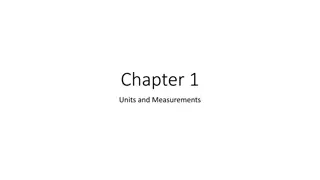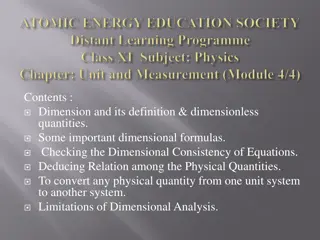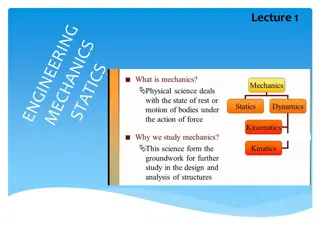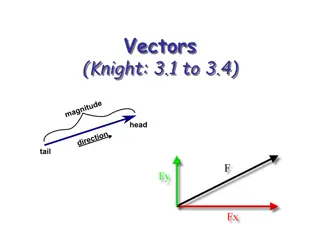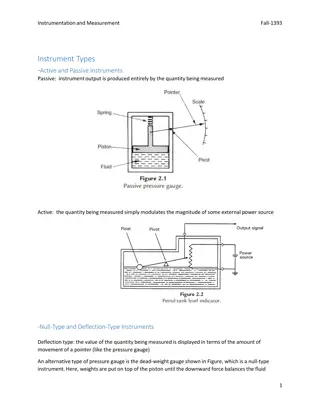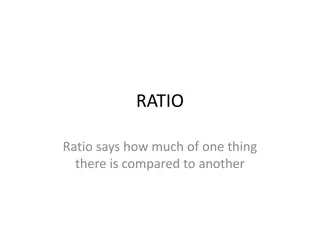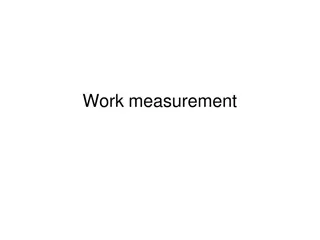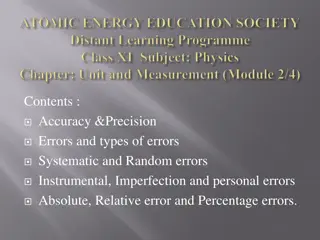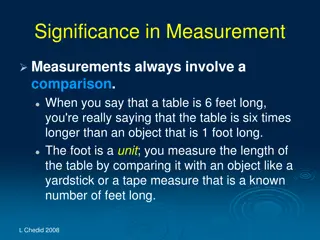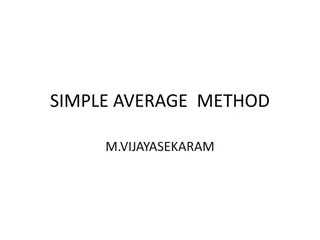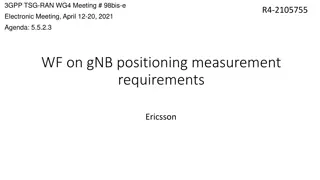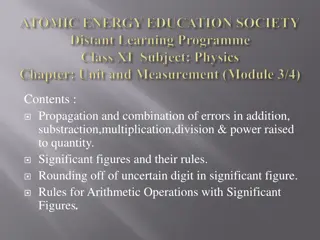Understanding Physical Quantities and Measurement Systems
Physical quantities can be fundamental or derived, and they play a crucial role in describing physical phenomena. Measurement involves comparing quantities with standard units, with fundamental units for base quantities like length, time, and mass. Different unit systems exist, including CGS, FPS, MKS, and the widely accepted SI unit system. The SI unit system includes base units for length, mass, time, electric current, temperature, and more, providing a standardized framework for measurements in various fields.
Download Presentation

Please find below an Image/Link to download the presentation.
The content on the website is provided AS IS for your information and personal use only. It may not be sold, licensed, or shared on other websites without obtaining consent from the author. Download presentation by click this link. If you encounter any issues during the download, it is possible that the publisher has removed the file from their server.
E N D
Presentation Transcript
Contents : Physical Quantities and their types Measurement and unit system Types of unit system Advantage of SI unit system Definition of fundamental units Measurement of length(Parallax method) Some special length units Measurement of mass and time
Physical Quantities: Those quantities which can be measured and, are necessary to describe any physical phenomenon. There are two types of physical quantities: Fundamental physical quantities: Those quantities which are independent and do not depend on other quantities are called as fundamental quantities. Mass ,Length and Time are called Fundamental physical quantities Derived Physical quantities: Those physical quantities which can be expressed in terms of fundamental physical quantities. Ex. Area,volume,force work,pressure etc. ** For detailed list of derived physical quantities refer to appendix A6.1,A6.2 and A6.3 of NCERT text book part 1
Measurement: It is the process in which any physical quantity is compared with internationally accepted value. Unit : A unit is an internationally accepted standard value for measurements of quantities. Fundamental units: Units for Fundamental or base quantities(like length, time etc.) are called Fundamental units. Derived units: The units of all other physical quantities can be expressed as combinations of the base units. Such units obtained for the derived quantities are called derived units. speed (v) = distance / time * unit: m/s acceleration (a) = change in velocity / time * unit: m/s/s = m/s2 force (F) = mass x acceleration *unit: kgm/s2 energy (E) = force x distance *unit: kgm2/s2 = Nm=J ** For detailed list of derived physical quantities refer to appendix A6.1,A6.2 and A6.3 of NCERT text book part 1
The base units for length, mass and time in these systems are as follows : In CGS system they are centimeter, gram and second respectively. In FPS system they are foot, pound and second respectively. In MKS system they are meter, kilogram and second respectively. MKS unit of force is Newton ads CGS unit is dyne. MKS unit of work/energy is Joule and CGS unit is erg. Some important physical quantities unit conversion: 1 Foot = 30.48 cm 1 hour = 3600 seconds 1 pound= 454 gram 1 Newton = 105dyne 1 joule =107erg 9.8 m/s2= 980 cm/s2
SI unit system : Internationally accepted system of units is Systme Internationale d Unites (French for International system of Units) or SI. It was developed and recommended by General Conference on Weights and Measures in 1971. SI lists 7 base units as in the table below.Along with it, there are two units - radian or rad (unit for plane angle) and steradian or sr (unit for solid angle). They both are dimensionless. Base Quantity SI Unit Symbol Length Meter m Mass Kilogram kg Time Second s Electric current Ampere A or I Temperature Kelvin K Luminous Intensity Candela cd Amont of substance mol mol
SI is a coherent system of units i.e system based on a certain set of fundamental units, from which all derived units are obtained by multiplication or division without introducing numerical factors. SI is a rational system of units as it assigns only one unit to be a particular physical quantity. For example, joule is the unit for all types of energy. This is not so in other systems of units. SI is an absolute system of units. There are no gravitational units on the system. This use factor g is thus eliminated. SI is a metric system i.e the multiples and sub multiples of units are expressed as power of 10.
1 meter : The meter is the length of the path travelled by light in vacuum during a time interval of 1/299792 458 of a second. 1 kilogram: The kilogram is the unit of mass; it is equal to the mass of the international prototype of the kilogram. The international prototype of the kilogram, an artifact made of platinum-iridium, is kept at the BIPM under the conditions specified by the 1st CGPM in 1889 (CR, 34-38) when it sanctioned the prototype and declared: 1 second : The second is the duration of 9 192 631 770 periods of the radiation corresponding to the transition between the two hyperfine levels of the ground state of the cesium 133 atom. 1 Ampere: The ampere is that constant current which, if maintained in two straight parallel conductors of infinite length, of negligible circular cross section, and placed 1 meter apart in vacuum, would produce between these conductors a force equal to 2 10 7 Newton per meter of length.
1 Kelvin: The Kelvin, unit of thermodynamic temperature, is the fraction 1/273.16 of the thermodynamic temperature of the triple point of water. 1 Candela: The candela is the luminous intensity, in a given direction, of a source that emits monochromatic radiation of frequency 540 1012 hertz and that has a radiant intensity in that direction of 1/683 watt per steradian. 1 mole: The mole is the amount of subatance as there are atoms in 0.012 kilogram of carbon 12; its symbol is mol. 1 Radian & 1 steradian :
Measuring large Distances Parallax Method Parallax is a displacement or difference in the apparent position of an object viewed along two different lines of sight, and is measured by the angle or semi-angle of inclination between those two lines. Distance between the two viewpoints is called Basis.
Measuring distance of a planet using parallax method: Similarly, = d/D Where = angular size of the planet (angle subtended by d at earth) and d is the diameter of the planet. is angle between the direction of the telescope when two diametrically opposite points of the planet are viewed. Measuring very small distances To measure distances as low as size of a molecule, electron microscopes are used. These contain electrons beams controlled by electric and magnetic fields. Electron microscopes have a resolution of 0.6 or Angstroms. Electron microscopes are able to resolve atoms and molecules while using tunneling microscopy, it is possible to estimate size of molecule.
Unit name Unit Value in meters Symbol f 10-15 m fermi 10-10m angstrom AU 1.496 X 1011 m astronomical unit(average distance of sun from earth) ly 9.46 X 1011 m light year(distance travelled by light in 1 year with velocity 3 108?/?) pc 3.08 x 1016 m parsec(distance at which average radius of earth s orbits subtends an angle of 1 arc second)
Measurement of Mass Mass is usually measured in terms of kg but for atoms and molecules, unified atomic mass unit (u) is used. 1 u = 1/12 of the mass of an atom of carbon-12 isotope including mass of electrons (1.66 x 10-27 kg) Apart from using balances for normal weights, mass of planets is measured using gravitational methods and mass of atomic particles are measured using mass spectrograph (radius of trajectory is proportional to mass of charged particle moving in uniform electric and magnetic field). Measurement of Time Time is measured using a clock. As a standard, atomic standard of time is now used, which is measured by Cesium or Atomic clock. In Cesium clock, a second is equal to 9,192,631,770 vibrations of radiation from the transition between two hyperfine levels of cesium-133 atom. Cesium clock works on the vibration of cesium atom which is similar to vibrations of balance wheel in a regular wristwatch and quartz crystal in a quartz wristwatch. National standard time and frequency is maintained by 4 atomic clocks. Indian standard time is maintained by a Cesium clock at National Physical Laboratory (NPL), New Delhi. Cesium clocks are very accurate and the uncertainty is very low 1 part in 1013 which means not more than 3 s are lost or gained in a year. ** Refer to table no. 2.4 & 2.5 of NCERT part 1 chapter 2 for various ranges of mass and time .
By: Govind Sharma PGT (Physics) AECS 4, Rawatbhata



